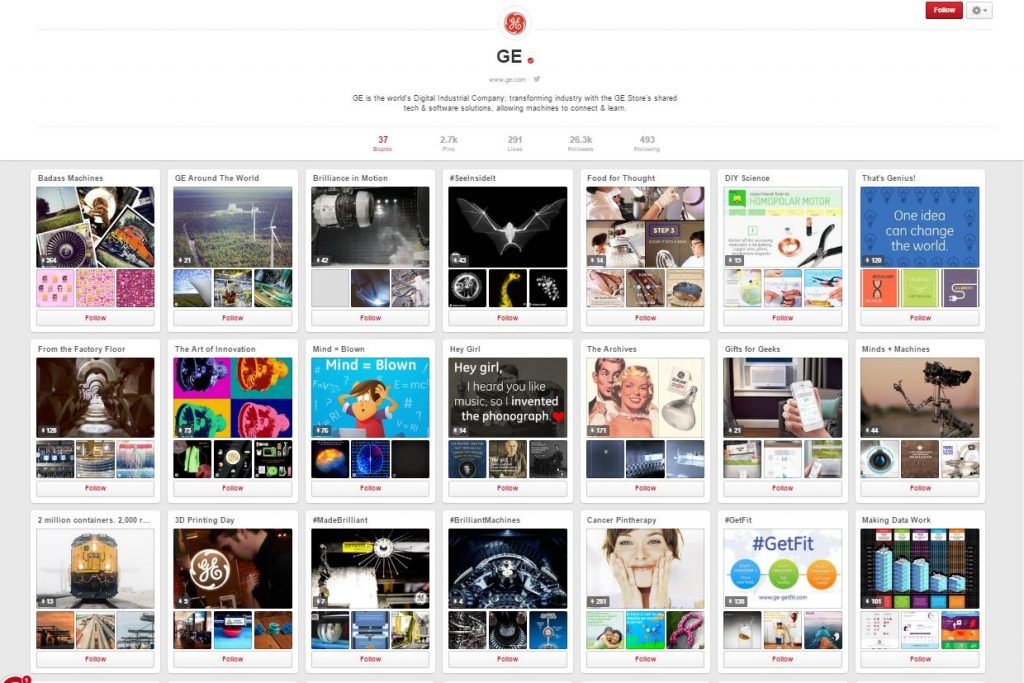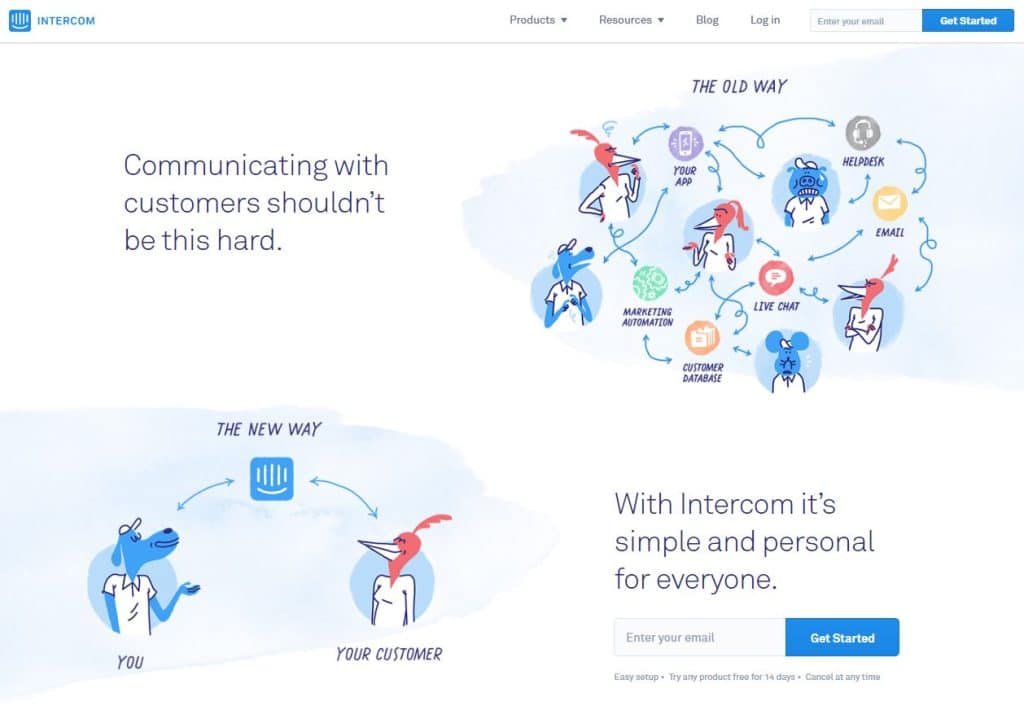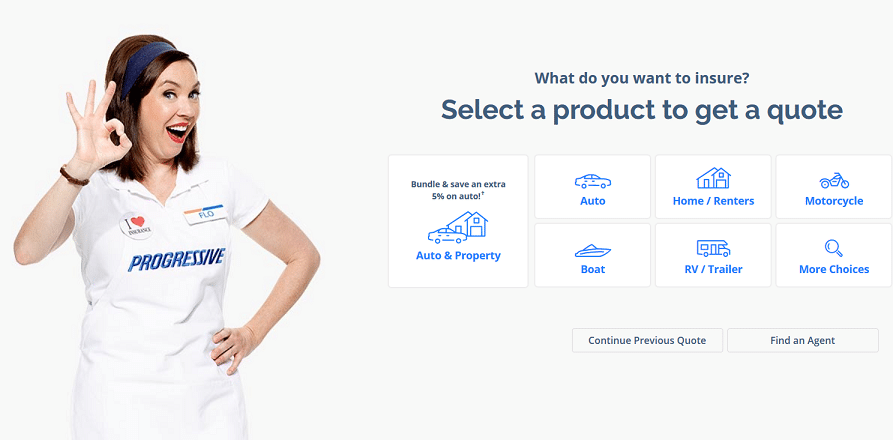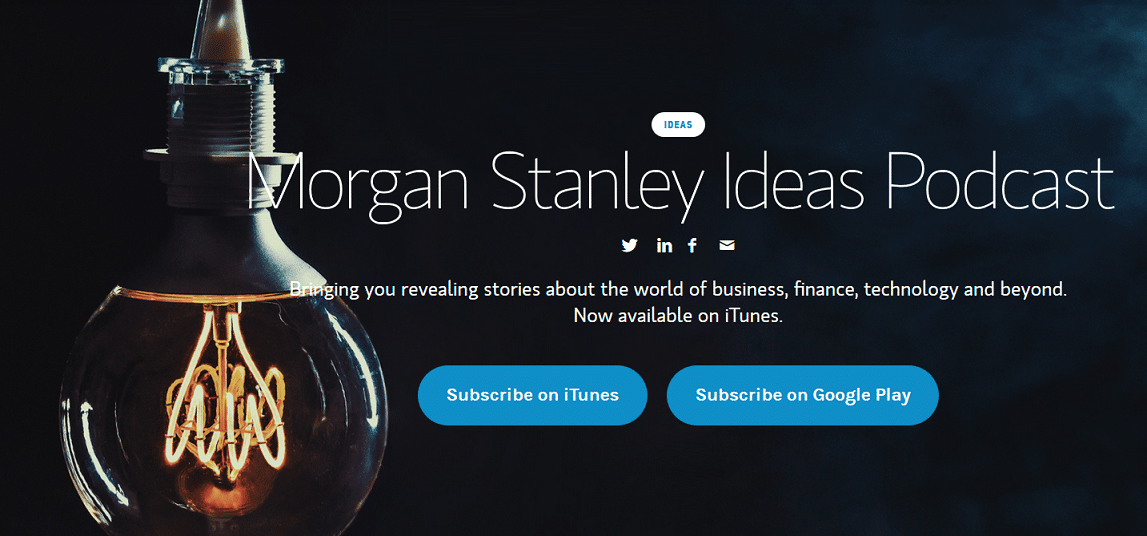![How to Create Content for Boring Industries [with Riveting Examples]](https://marketinginsidergroup.com/wp-content/uploads/2022/02/MIG-Feature-Image-Template-2023-12-13T160746.826.png)
How to Create Content for Boring Industries [with Riveting Examples]
We are now in a stage where the general population demands constant entertainment. I blame the internet, with its wealth of cat gifs, Youtube, and instant access to everything you could ever want to know via search engines.
And now we have your site, with visitors coming across it while roaming the internet. They might have clicked a link in an article to find you, or put in a search query on Google that resulted in finding your site. Either way, something has interested visitors enough to visit your domain.
Now, it’s up to you, and your content, to keep them around. If they don’t receive that instant gratification, be it an answer they are looking for, or entertainment they seek, you’ll lose them.
So, your content needs to fulfill those needs and keep them interested. If you don’t, if you are boring, you’ll lose them, and all of your work creating content will be for nothing. Before you can produce great content for your visitors, you first need to identify what is boring them.
Understand Your Customers
Before you create any content, spend as much time as you can to really get to know your customers. Learn about their needs, behaviors, motivation drivers, triggers, opinions, interests and demographics. The more you know about your customers, the more value you can add through the content you create.
By understanding your consumer pain points, challenges and needs, you can identify the content topics to cover as well as related topics that your target customers may be interested in reading about. This makes your content more interesting, fresh and original to keep your audience engaged and entertained.
To reach your customers, it is very important to learn about their media behavior. You need to know which channels where they spend time and which media formats they prefer. Do they like to read blogs, watch videos, listen to podcasts or attend webinars? Once you know your audience’s media habits and behaviors, you need to create the content they prefer and share through the platforms where they “hang out.”
There are many ways to do this. You can use web analytics tools like Google Analytics and other free or paid online tracking tools like Alexa, Compete and SimilarWeb to gain insights into where your customers read and share content. You can also track your audience’s media habits through their social media profiles, such as their Twitter lists, LinkedIn groups, blogs and any other places that will help you learn more about their media preferences and behaviors.
Know What Makes Your Audience Share Your Content
Compelling content sells. That’s great for those marketing for the so-called sexy industries like food, travel and leisure, and skydiving.
For insurance brokerages, accounting firms, and plumbing repair services, getting people excited about your brand isn’t as simple.
Yet, with creativity and some thinking outside-of-the-box, you can make any industry interesting, engaging, and worthy of being shared on your audience’s social media sites.
So what will make your readers or viewers share your content?
In a survey of random internet users, when asked what drives them to share, the number one response is to entertain. There’s your answer – produce content that is entertaining. While 44% of survey participants listed entertainment, another 25% share to educate their social media friends and followers. 20% share content to express their identity. And, another 10% want to show support for a cause.
With the unstoppable power of inbound marketing today, you have to be able to come up with riveting content in order to get people interested in your blog and talking about your brand. Otherwise, there’s no way you’ll stand out from the competition.
Content marketing at its best will draw you in without you even realizing what hit you. Nowhere is the power of good content more apparent than in the unsexiest of industries – finance. It’s not overly challenging to make fashion brands or vacation destinations appealing. But tax accounting? Now that takes skill.
So if you want to build up awareness of your brand through your website and get people interested, talking, and buying, you’ll need to put on a good show. How?
Have an Exciting Storyline
How do you feel about the industry you are marketing for? If you believe it’s lackluster, then that is going to come through with your marketing, leading to dry-as-a-bone campaigns that no one wants to pay attention to. The first step to creating content that others will love is to shift your own perceptions.
You have to know why and how your ‘dull’ industry is important if you are going to convince others that it is worth their time.
Here’s a set of questions to ask yourself to get those inspiring juices flowing.
- If your product or service was a hero – what would be its heroic tale? For example, a plumbing company saves homes from water damage – and customers from serious financial destruction. Home insurance swallows risk for breakfast, so customers can live with peace of mind.
- What would life be like without your brand’s product? Where in the world would we all be if locksmiths didn’t exist? One word: out-in-the-cold. No waste management services? Swimming in germ-infested, putrid garbage. Yuck.
- How has your brand evolved in order to become the hero? This is where you look at what sets your brand apart from others in the industry. It is the ability to change, transform, and become something more – the personal brand transformation. For example, a financial firm may have started to fill a gap in the local market, but has evolved in response to both company vision and client expectations to trail blaze with sustainable investment methods.
Think Local and Relevant
Marketing expert Joe Friedlein shared a great tip in a recent podcast on creating content that will go viral. When marketing for an air conditioning rental company, an industry dominated by spec sheets and who-cares comparisons, he suggested looking for a creative geographic angle in order to engage potential leads and to make the outreach process easier.
His team researched temperature control in the workplace throughout the US, and came up with a really fun campaign – the ‘thermostat wars’. They used their findings to get people interested in the office air conditioning rentals by demonstrating that thermostat control is a constant source of warfare in the workplace. It was humorous, engaging, and a relatable way to present a traditionally boring subject – who hasn’t gotten into an argument at least once in their life about turning up/down the thermostat?
Control the Focus and Length of Your Content
What is the reason your content exists outside of marketing? Great content answers difficult questions, entertains a viewer or is instructional in a specific subject. Understanding what your target markets are looking for and then creating content around that need is how to make powerful content.
Once you understand the purpose of your content, you need to focus it. If somebody is looking for an answer to a question, make it easy to find. Don’t bury the answer amidst lines of filler content or at the very bottom of the page. Focus in on why you’re producing this content and remove distractions from it. Your visitors are first going to skim your content to see if the answer is easy to find, and if it isn’t, they’ll return to Google to find a different site.
How long should your content be? Well, every marketer will give you a different answer, and that’s because every reader is different. Again, you need to understand your target audience to make an informed decision. Casual readers searching for an answer or entertainment will want shorter, easy to digest, content. More professional and dedicated readers are looking for longer, more in depth content to dig into. Every common length has advantages and understanding your readers is essential to deciding between 250 or 2000+ word blog posts.
Turn to your analytics again to discover how long your content should be. If multiple longer articles have high bounce rates, it might be a symptom of them being too long. Articles longer than a thousand, or even 500 words, might intimidate readers into leaving. Shorter articles with a lot of traffic going to other pages but never transforming into leads or customers can be a sign your readers are looking for more in-depth answers, but not finding what they are hunting for on your site.
Perfect Your Writing Voice
A very simple way to bore people is to write like a college professor. And no, not that really interesting one where the wait list to get into their class is a mile long. We’re talking about the extremely dry, long winded, humourless, hour long Powerpoint lecture professors, where students ache for the sweet release of the end of the semester.
To figure out your current voice, read your content out loud to yourself. Pay attention to how your voice sounds. Does it feel like you are giving a lecture or having a conversation? Easy to read articles use a friendly, conversational tone, like you’re having a friendly talk or telling an interesting story. Boring voices sound like a high school essay; coming across as forced, robotic, and insincere.
Create Visual Content
Today’s consumers prefer some degree of visual content over plain text. People can remember 80% of what they see, but only 20% of what they read. So think about how you can use relevant visuals, such as images, videos, infographics and data visualizations, to spice up your content and make a lasting impression on your audience.
Take GE, for example, you’d wonder how the company could do anything interesting with electrical and industrial equipment, medical devices or energy management services. But creatively, using Pinterest, the company posts fun, inspiring and stunning pictures that, as Matt points out, showcase innovation, achievement, eco-friendliness, love and personality, while effectively communicating what the company does.

Think beyond your product or service, and instead think about how your business relates to the world and the everyday problems or challenges your target audience faces. This will help you create compelling visual content that not only empathize and relate with your customers, but also communicate your brand message and story.
Here are 8 best practices from Content Marketing Institute to help you create powerful visuals to make your content more engaging and interesting. Here are also some of my top picks for free and paid visual content creation tools.
Provide Answers And Solutions
As you research the content that’s trending with your customers and competitors, you may find that a lot is around burning questions, issues and problems in your industry. So find out what topics are trending and what questions or challenges your customers are searching, then think about how you can provide solutions and answers to help them in an engaging way.
Show, Don’t Tell
Share case studies, expert and customer interviews, testimonials, customer success stories and other content that shows instead of telling what your business or product can do for customers. Bombarding your readers with product features and benefits makes your content snooze-worthy, no matter how great or interesting your product is. Think about how you can tell stories about your products that customers can relate to and how your business can help improve their lives.
Break Down Complexity
If your business needs to communicate a lot of complex data in order to build credibility and authority in your industry, try to simplify the information into digestible pieces of information that your customers can easily consume and understand.
Here’s a great example: Intercom, a CRM solution provider that helps businesses simplify the way they communicate and engage their customers through the Intercom platform, can sound like pretty boring and complex idea for an average person. But to simplify this information for their target audience, Intercom uses colloquial language and simple illustrations, graphs and data visualizations to make their content more accessible and interesting to read.

Make Content for People, Not Search Engines
Sometimes, marketers create content for the sole reason of ranking for keywords. They focus so intently on what search engines think of them that they forget who the real customers are. Content produced solely to appease the great search engine overlords is only going to be interesting to robots. So don’t do it.
If your main goal in content creation is to rank higher, your writing’s going to bore readers because it wasn’t made for them. You’ll be more focused on keywords and adding fluff that is meaningful to search engines, but completely irrelevant to potential consumers. It will also make your writing seem impersonal and robotic (which is extremely boring.)
Now, I’m not saying forgot completely about keywords, because they are still important. Instead of stuffing keywords into your article, focus your content on how people search. If you receive a lot of questions from some of your customers, or they all have similar pain points, write content designed to answer them. That way, they’ll search their question on Google, and your content answering it will satisfy both your readers and search engines. Good content marketing equals good SEO.
Use Popular Culture to Entertain
Want to be entertaining? Then play around with popular culture in your next marketing campaign. This does take some degree of sophistication. You don’t want to just throw in a few celebrity names or hitchhike with this summer’s blockbuster to generate leads. The trick is to identify what your target audience is interested in and where popular culture intersects with your brand.
Arby’s genius @Pharrell tweet is one of the best examples of masterful use of pop culture in marketing. It’s brilliantly playful. It also doesn’t feel forced. That means to use this tactic, you have to be able to recognize opportunities when they arise and use them quickly. Perfect for your social media marketing!

Give Your Audience a Way to Interact
It doesn’t matter how ‘boring’ your industry is. If you have a cool app that will help people to track something relatable to your market, an interactive video, or a game or contest, then you’ll get the attention that you want. Of course, that attention will be short-lived if your interactive media doesn’t strike a balance between entertaining and being truly useful for your audience.
A small, Texas-based oil and gas drilling company, Payson Petroleum, found a creative way to establish themselves as an industry leader to potential independent oil investors. They developed a branded app that doesn’t just bridge potential investors with their brand, but with the entire industry, providing market updates, investment calculations and expert commodity predictions.
The app, which is regularly updated and comes with a professional look along with its wealth of insights, adheres well to the company’s ethos – setting themselves apart by prioritizing ‘transparency, honesty, and integrity’. Their stated focus is in building relationships with their clients. Unlike countless other brands that make this claim, Payson Petroleum has delivered on their promise with an app. Nice touch for a traditionally unremarkable industry.
Think Outside Your Industry
And finally, get out of your brand’s box. Just because you are marketing for a laundry detergent, doesn’t mean you just have to talk about laundry. Spread your net over the entire home lifestyle industry, covering topics ranging from interior decorating to fashion and always tying back to keeping your laundry, from throw pillows to evening wear, sparkling clean.
You can expand your topics, yet still be useful to your audience with any seemingly bland industry, such as wellness topics for life insurance, productivity and career advice for office supplies. Marketing with tributary topics also gives your brand a way to express more character through the visually appealing, educational, value-driven content on your blog.
Make it informative as well as fun to digest and imbue with plenty of personality to help your audience define their own, and you have the winning formula for creating engaging, totally share-worthy content, even if you are marketing for a sewage company.
When marketers can make car insurance and debt consolidation sparkle, they’ve proven themselves to be masters of their trade. Here are a few B2B content marketing examples from the finance industry that truly shine out.
Look At What Your Analytics Are Saying
Do you sometimes wish you could grab your target market, shake them and yell “Tell me what you want! I’ll make it if you would only tell me.”
Well, they are. In a sense. They are informing you what they like and dislike through your analytics. They’re letting you know what pages are attracting them, what attracted them to it, if you kept their interests long enough so they didn’t bounce away, whether your content was good enough that they stayed on your site to visit another page, and what types of content are the most engaging.
Content marketing success does not happen overnight. You need to regularly monitor and evaluate how your content is performing to be able to identify what is working (and isn’t) and readjust your content marketing strategy accordingly.
Want to know which of your pages are the most interesting? Exclude the home page and then compare which pages have the most views, lowest bounce rate, and retains visitors. Interested in finding which pages are capturing people’s interests at first, but quickly losing it? Look at pages with high views, but also a very high bounce rate.
Every marketer should know the basics of analytics, like tracking website visits and conversions rates, but delving further into your site’s numbers can reveal the answers to all of the above questions.
Your website’s data is incredibly valuable and you should utilize it whenever making content decisions. Doing so will lead to better visitor experiences, higher conversion rates, and will help guide you to new idea and opportunities.
Example 1: Progressive Insurance with the Perfect Brand Persona
Outdoing even Geico’s strangely adorable mascot, the Geico gecko, Progressive Insurance has created a masterfully appropriate strategy led by the company’s helpful and insurance-loving brand personality, Flo. They’ve projected an over-arching theme of friendly, flawless service. It starts with Flo, but it resonates through every piece of content.
- An Instagram account filled with examples of corporate social responsibility.
- A clean website design with minimal text, just plenty of clear CTAs and Flo with her trademark starched white uniform and cherry red lipstick smile.
- An easy-to-use app for customers, with intuitive features and Flo’s smiling face
- Video marketing featuring ever-perky Flo

There’s a clear message woven into the entire Progressive content strategy: Relax, Flo’s got you covered. She (and by extension Progressive) will get you perfectly tailored coverage because of a sincere passion for risk-reduction, nothing else. It’s pure, simple, and unobtrusive.
Example 2: Accredited Debt Relief with Seamless Social Proof
Accredited Debt Relief, a debt consolidation company, pulls all the stops with social proof and influencer marketing techniques to build confidence and trust with their content. They even offer a free calculator to spell out exactly what a customer’s experience will be when using Accredited’s services.

And, like Progressive, even the brand name hints at the experience a customer is supposed to have.
This content message addresses their target buyers’ pain points of anxiety and uncertainty: Not sure how to get out of debt? Don’t worry. Here are the industry awards, client testimonials, proven results, and even a Shark Tank TV star to tell you Accredited Debt Relief is your ticket out of debt.
Example 3: Discover Financial Services with Customer Focus
Discover’s content strategy is very people-forward. You won’t find UVPs and a run-down of the company’s philosophy with this financial company. Everywhere the customer runs into Discover, they are met with nothing but benefits for them.
- A blog for ‘your financial well-being’
- Free FICO credit score – even if you aren’t a customer
- Free personal data security alerts
- A brand Twitter account where users can have their customer service issues resolved
- Even the brand’s credit card design puts the customer first with metallic pink, purple, gray, or blue credit cards – who wouldn’t want to carry one of those?
This buyer-centric content model positions Discover as a trustworthy brand that is setting the bar for giving customers more. That’s brilliant marketing for a credit card company. Why think about high interest rates when you’re getting so much love?

Example 4: Deloitte Accounting with Customer Delight
You wouldn’t necessarily think of a business tax and advisory firm as a leader in delivering customer delights. Deloitte’s marketing team are masters at customer relationship building. And they do it the hard way. Their strategy involves in-depth, informative content, not loyalty programs and discounts.

If you want to know how hard you could be working to convince your existing customers and qualified leads your brand is worthwhile, explore Deloitte’s content.
- Real-time industry conversations
- Webcasts by thought leaders
- Subscription email newsletters – they have several to cater to varying customer interests
- A free online accounting library
- A free standalone website dedicated to covering accounting news
- A useful blog fittingly coined Deloitte University Press
- Active social feeds across all the company’s social media accounts, including a great example of B2B LinkedIn marketing in action, as well as direct links to the company’s leaders’ Twitter accounts, a subtle tactic that fosters a sense of community with the brand while also establishing the management team as industry experts
Example 5: Ally Bank with Fun and Engagement
Ally Bank went the fun, make-the-customer-smile route with their content marketing. As a leading online bank, Ally caters to budget friendly banking for customers who are comfortable managing their finances without the traditional brick and mortar experience. They veered on the (relatively) untraditional side with their content.
Their website still follows the conventional professional bank format with service overviews, free financial calculators, rate comparisons, and plenty of CTAs, but Ally has thrown in quirky purple headlines, paired with images of similarly quirky people to add an edge of fun to the brand. By standing out, even slightly, Ally instantly becomes more interesting than its competitors, while still conveying a professional, dependable banking service.
The fun really begins when you branch out to Ally’s social media channels. Customers will find an Instagram page filled with images of employees having a great time joking around at work, metaphor-rich Facebook posts, and some of the funniest marketing videos of 2017.
Example 6: Morgan Stanley with Brand Community
You could spend an eternity in the world of Morgan Stanley. This financial firm has created an immersive brand community with its content marketing. Consumers won’t just find helpful articles on investing and saving. The Morgan Stanley website and social media platforms connect customers to videos, podcasts, and blog posts on the current global zeitgeist.

Technology, the environment, business, energy, healthcare, behavioral economics, global trends, and of course, wealth management – it’s all laid out for their audience, providing curated insights for people who want to know what’s going on in their world to better manage their money. Their whole strategy, from the Ideas podcast to the Twitter feed, screams thought leadership. Want to be in the know? Join the Morgan Stanley camp.
No Brand Has the Excuse to Be Boring!
These content marketing examples show what can be done with imagination, an understanding of the market, and wise usage of the tools in a content marketer’s toolbox. It doesn’t matter what the industry is, but rather how creative and relevant the marketing is. Even accounting can captivate with the right content.
Now, not every blog post is going to be a modern literary masterpiece, and that’s ok. All it needs to do is be interesting enough that your viewers want to read it. Tell the reader why your content matters. Aggravate some pain points and then give them the solution. Don’t be afraid to include audience appropriate images to help break up lines of text, or include other media forms to add extra value.
Don’t be accepting of boring content. If something isn’t performing, find out why and then fix it, both in current content and in future productions.
What are you doing to create interesting content? Do you have a trick I missed that makes your content pop? Let me know on Twitter!

![How to Create Effective Thought Leadership Content [Examples Included]](https://marketinginsidergroup.com/wp-content/uploads/2023/09/Screenshot-2023-08-29-at-11.07.57-AM.png)




